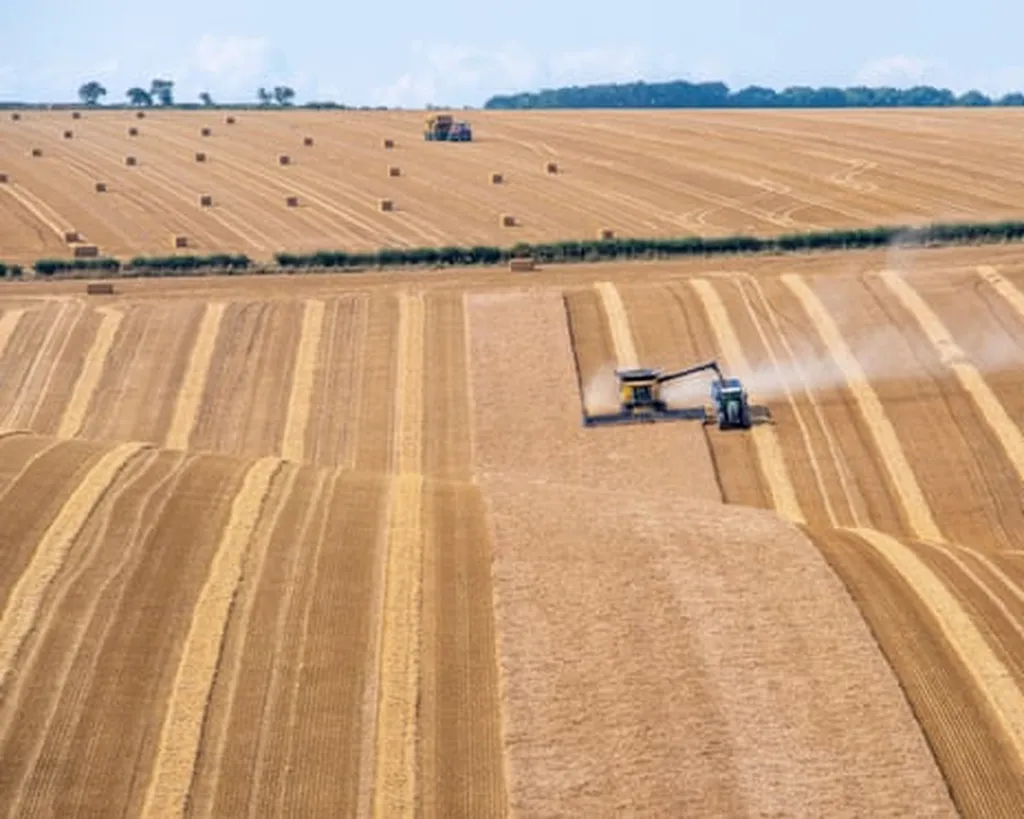In the quest to mitigate greenhouse gas (GHG) emissions from agricultural soils, a recent study led by Xiaoyang Liang from the Institute of Environment and Sustainable Development in Agriculture at the Chinese Academy of Agricultural Sciences has shed new light on the intricate dance between biochar, biogas slurry, and soil bacteria. The findings, published in the journal *Biochar* (translated from Chinese), challenge conventional wisdom and offer a nuanced perspective on the effectiveness of biochar in reducing GHG emissions, with significant implications for the energy and agricultural sectors.
Biochar, a carbon-rich product derived from the thermal decomposition of organic material, has long been touted as a promising strategy for reducing soil GHG emissions. However, Liang’s study reveals that the benefits of biochar addition (BA) are not uniform and can vary significantly depending on the water and fertilizer strategies (WFSs) employed, particularly when transitioning from conventional chemical fertilizer strategies (CFS) to biogas slurry strategies (BSS).
The study found that under CFS, BA reduced CO2 emissions by up to 36.51%, but simultaneously increased CH4 emissions by up to 135.08% and N2O emissions by up to 51.31%. “This was a surprising finding,” Liang notes. “While biochar can indeed reduce CO2 emissions, it can also lead to increased emissions of other potent greenhouse gases, depending on the context.”
The transition from CFS to BSS, however, led to a significant reduction in CO2 and N2O emissions, albeit with a substantial increase in CH4 emissions. Moreover, the study found that different BA ratios had varying effects on GHG emissions under BSS. “This suggests that the effectiveness of biochar in mitigating GHG emissions is highly context-dependent and requires careful consideration of the specific agricultural practices and soil conditions,” Liang explains.
Perhaps most intriguingly, the study revealed that both BSS and BA enhanced the abundance of rare bacterial sub-communities within the soil. These sub-communities, in turn, played a crucial role in reshaping the GHG emission pathway regulated by BA, highlighting the “priority effect” of these communities in controlling GHG emissions.
The findings have significant implications for the energy and agricultural sectors. As the world grapples with the urgent need to reduce GHG emissions, understanding the complex interplay between biochar, biogas slurry, and soil bacteria is crucial. This study underscores the need for a more nuanced and holistic approach to soil management, one that takes into account the specific agricultural practices and soil conditions.
Moreover, the study’s emphasis on the role of bacterial sub-communities in regulating GHG emissions opens up new avenues for research and innovation. As Liang puts it, “By better understanding and harnessing the power of these microbial communities, we may be able to develop more effective and sustainable strategies for mitigating GHG emissions from agricultural soils.”
In the energy sector, the findings could inform the development of more efficient and sustainable bioenergy systems. As the world increasingly turns to bioenergy as a cleaner alternative to fossil fuels, understanding the complex interplay between biochar, biogas slurry, and soil bacteria is crucial for optimizing these systems and minimizing their environmental impact.
In conclusion, Liang’s study published in *Biochar* offers a compelling reminder of the complex and interconnected nature of agricultural and energy systems. As we strive to develop more sustainable and resilient food and energy systems, it is crucial that we take a holistic and nuanced approach, one that takes into account the specific contexts and conditions of these systems. By doing so, we can unlock new opportunities for innovation and progress, and pave the way for a more sustainable future.

